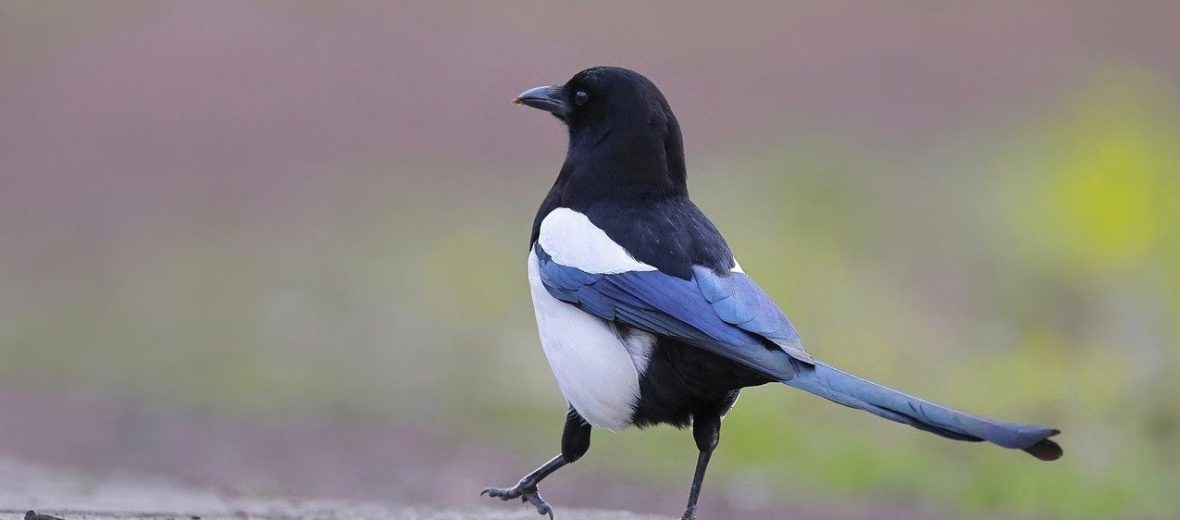
The Eurasian magpie, aka common magpie, can be found throughout Spain and Ireland to the Kamchatka Peninsula. These birds prefer open countrysides with a smattering of trees. However, they have also adapted to dwell to gardens and parks. Due to a general lack of threats, these birds are very abundant and have an estimated population of 57,000,000 wild individuals. As such, they are listed as Least Concern by the IUCN.
First the Stats…
Scientific name: Pica pica
Weight: Up to 9.6 ounces
Length: Up to 18 inches
Wingspan: Up to 24 inches
Lifespan: Up to 22 years
Now on to the Facts!
1.) Eurasian magpies are diurnal (active during the day).
2.) Most of their days are spent on the ground in search of food.
3.) They also exhibit kleptoparasitism (stealing food from other animals – primarily birds).
4.) Stolen food is often cached in holes in the ground.
5.) Their calls are a “chac-chac,” a repeated “chac-chac-chac-chac,” and a “Uik Uik” sound; which sounds like that of a barking dog. They also produce a kind of hissing sound that can be heard from a short distance.
But wait, there’s more on the Eurasian magpie!
6.) A group of magpies is called a charm, congregation, gulp, parliament, or tiding.
7.) Young birds and their eggs, mice, young rats, juvenile voles, adolescent moles, insects, scraps, carrion (dead animals), acorns, grain, and other vegetation are all readily consumed.
Did you know…?
The Eurasian magpie, along with the Western jackdaw’s nidopallium (an area of the avian brain) is predominantly the same relative size as those found in chimps and humans and even quite a bit larger than gibbons. This makes them among the smartest of all birds and even most mammals.
8.) These birds are considered to be monogamous (mate for life, or for more than 1 breeding season).
9.) Females lay up to 6 eggs that hatch in up to 22 days.
10.) The chicks are brooded by the female for approximately up to 10 days and they are fed by both parents.
But wait, there’s still more on the Eurasian magpie!
11.) European magpies are thought to be self aware, noticing their reflection in a mirror and recognizing it as their own.
12.) These clever birds have also been documented using tools, hiding and storing food throughout several seasons, and predicting the behavior of others.
13.) They also have the ability to properly cut and portion food for their young.
14.) Magpies, while in captivity, have been seen copying human voices, counting in order to obtain food, and regularly using tools to clean their own cages.
15.) In the wild, they have been documented organizing themselves into various gangs and strategically plotting together to get a better chance at killing prey birds and avoiding predation.
Now a Short Eurasian Magpie Video!
This video talks about magpies in general.
Be sure to share & comment below! Also, check out the Critter Science YouTube channel. Videos added regularly!
Want to suggest a critter for me to write about? Let me know here.



